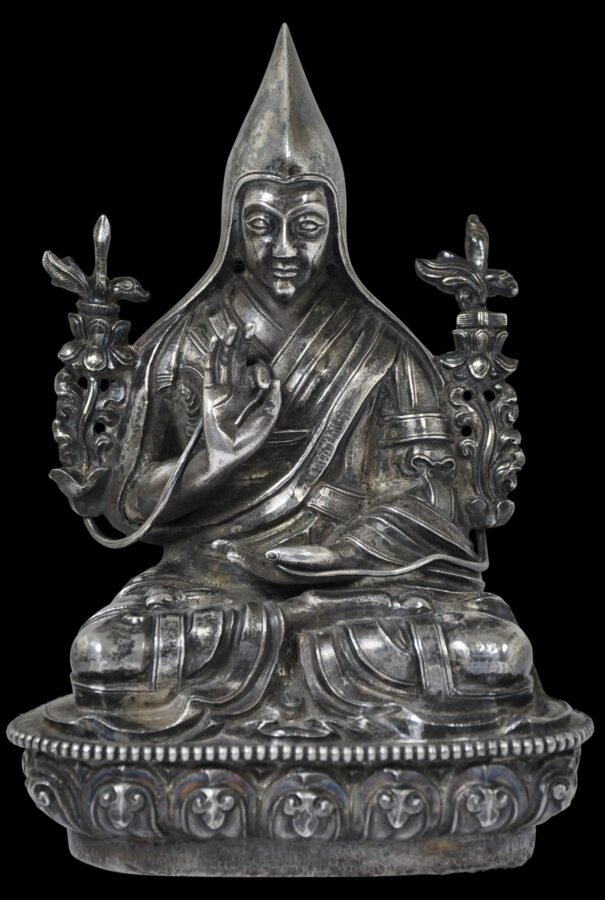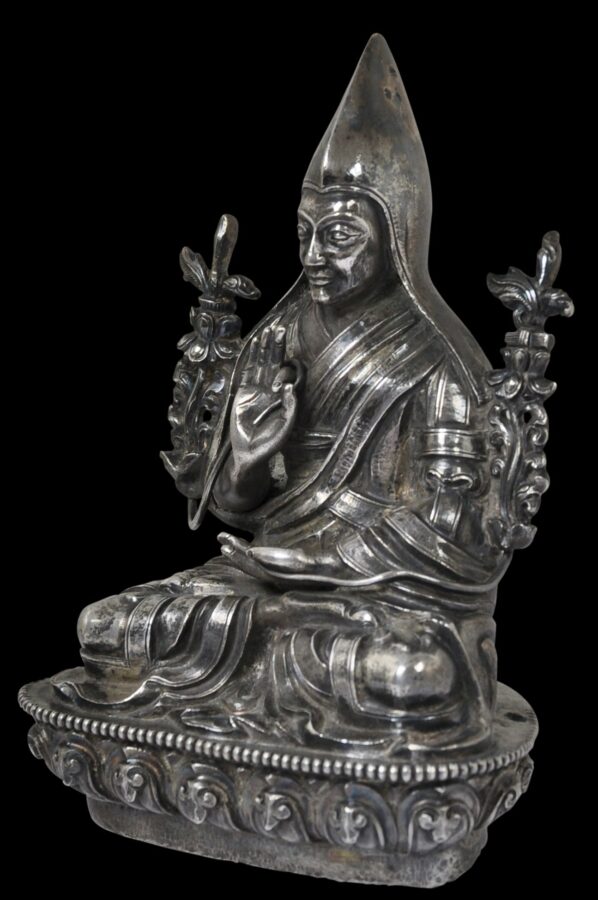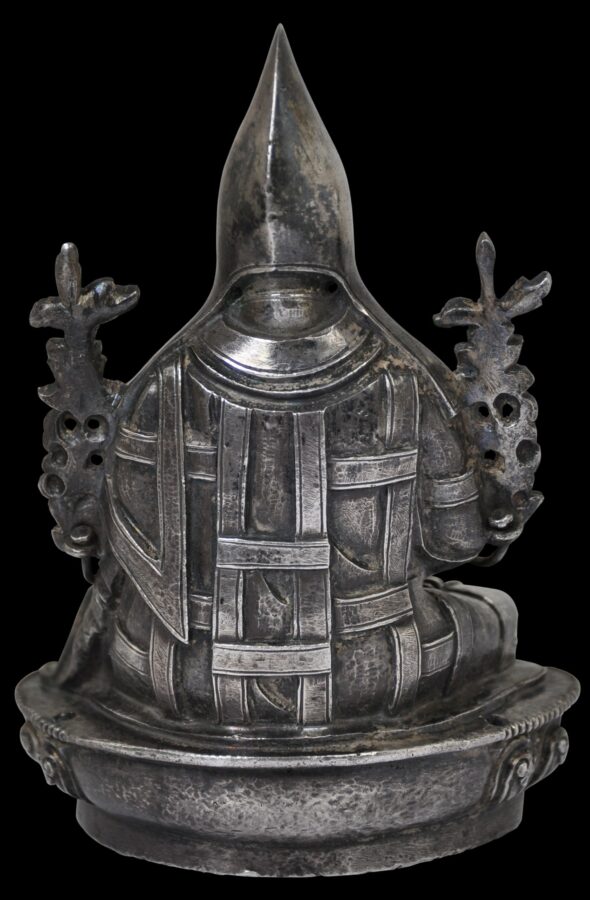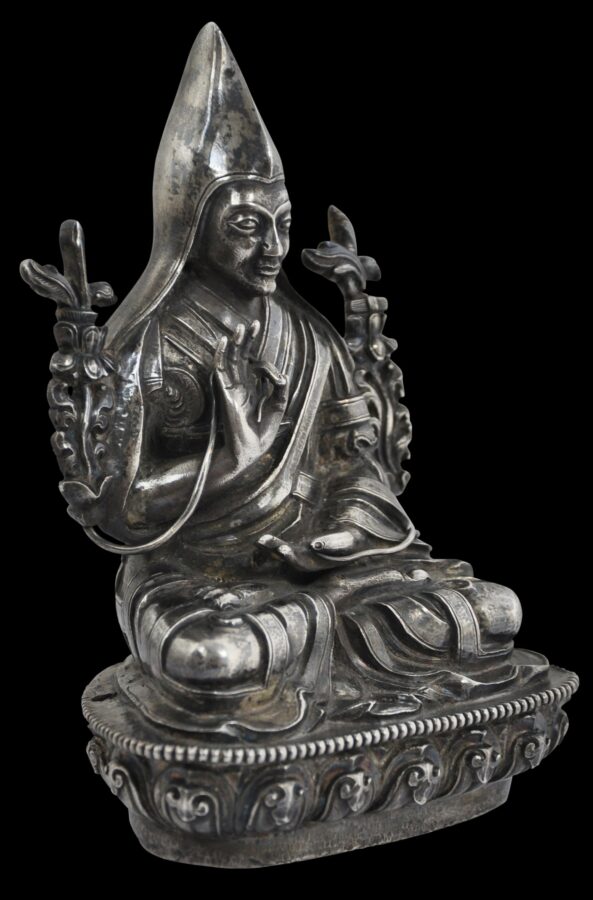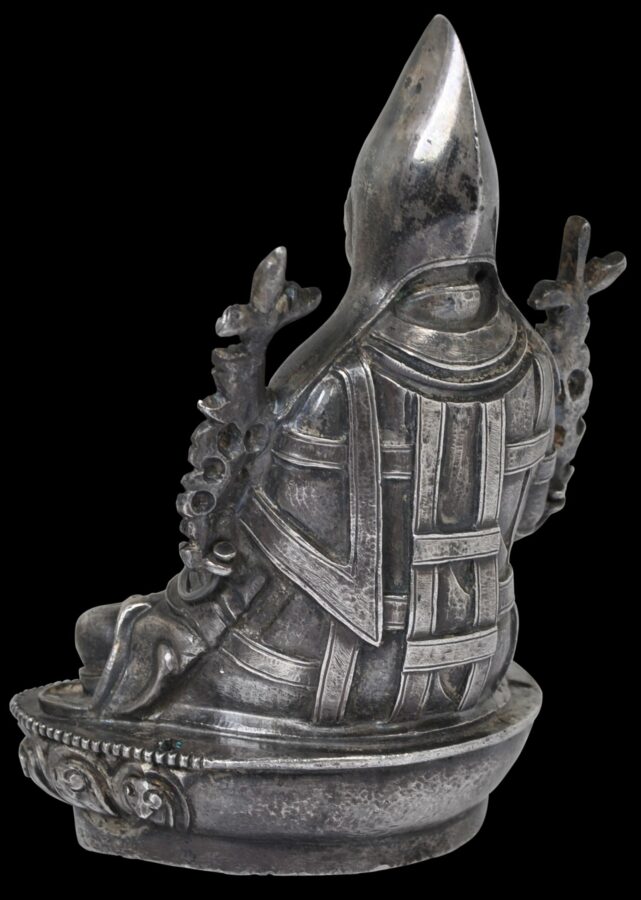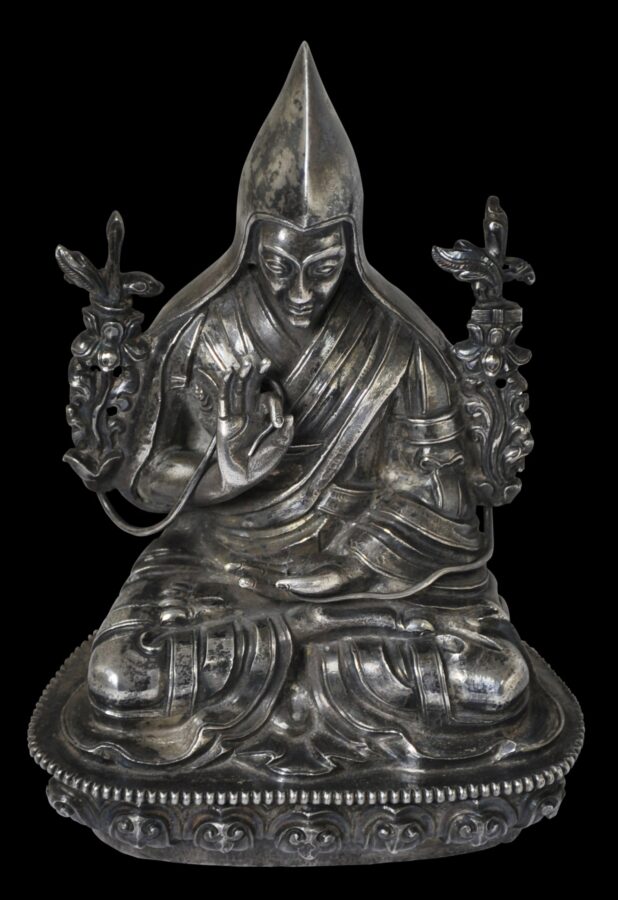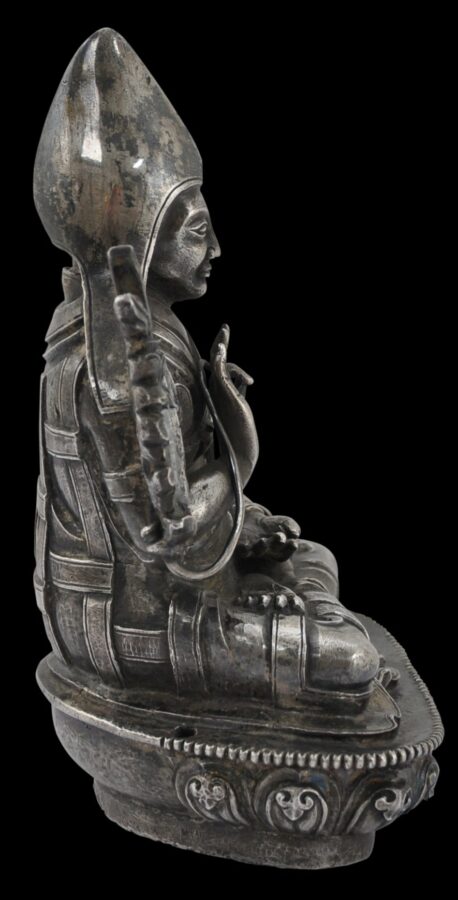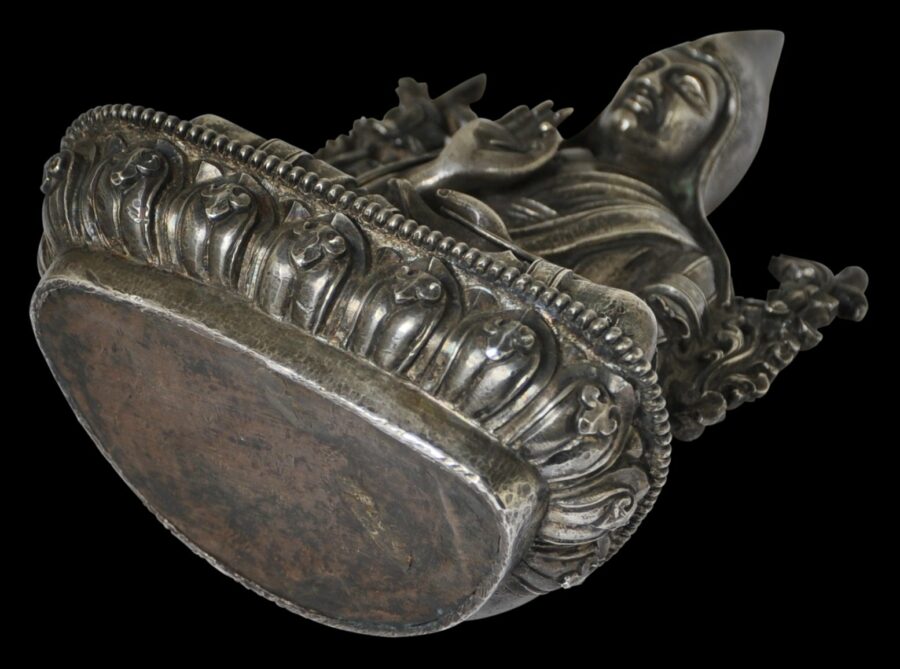Enquiry about object: 8888
Superb Tibetan Silver Image of Tsong Khapa
Tibet 18th century
height: 13.7cm, width: 9.8cm, depth: 7cm, weight: 606g
Provenance
private collection, England.
This exceptional and rare image shows Tsong Khapa, the founder of the Gelug or Gelugpa order, the most important Buddhist order in Tibet. The image has been fashioned from silver – a precious and expensive metal in Tibet that was used rarely and only for special commissions.
Tsong Khapa here is shown as a monk. He sits cross-legged on a lotus throne with a pearled silver edge. He wears monastic robes with elaborate pleats and folds – they are worn in three parts – a wrap shirt, a skirt wrapped around the waist that reaches to the ankles, and an outer robe, but with the right arm left mostly bare. The figure wears the high, peaked yellow hat with long side flaps (the pandita or pansha) that is typical of the order that he founded. He is shown with an expressive, naturalistic face. The right hand is in the teaching gesture of vyakhyana, while the left rests on his lap.
Two lotus blossoms on long stems rise on his sides. One bloom supports a small sword of wisdom to cut through ignorance. The other supports a book of transcendental wisdom. These are also attributes of Manjushri, the Bodhisattva of Wisdom of whom Tsong Khapa is believed to be an incarnation.
The back of the image is exceptional. It shows an elaborate cross-work of folds and pleats in the outer robes, which beautifully follow the natural contour’s of Tsong Khapa’s body.
The image’s copper baseplate is intact. There are spaces in the rear of the base for the insertion of a backing plate and perhaps other attributes but these are not present.
Tsong Khapa (1357-1419) was one of the greatest religious figures of Tibet. He came from a nomadic family from Amdo in what was north-eastern Tibet. He was a scholar and an adherent to Buddhism in its more pure form. He founded the Gelug or Gelugpa order (the ‘yellow hat’ sect of Tibetan Buddhism of which the Dalai and Panchem Lamas are adherents.) It is out of this sect that the Dalai Lamas came to rule Tibet essentially as a Tibetan-Buddhist theocracy. Tsong Khapa and his immediate students founded several of Tibet’s most important monasteries.
The image here is unusually fine. It is also unusual to find a high-quality image executed in silver. This is a rare and important image from Tibet.
References
Berger, P., & T. Tse Bartholomew, Mongolia: The Legacy of Chinggis Khan, Thames & Hudson, 1995.
Konniger, S., (ed.), Masterpieces of Rijksmuseum Volkenkunde, KIT Publishers, 2013.
Lipton, B., & N.D. Ragnubs, Treasures of Tibetan Art: Collections of the Jacques Marchais Museum of Tibetan Art, Oxford University Press, 1996.
Weldon, D., & J. Casey Singer, The Sculptural Heritage of Tibet: Buddhist Art in the Nyingjei Lam Collection, Laurence King/Weatherhill, 1999.


